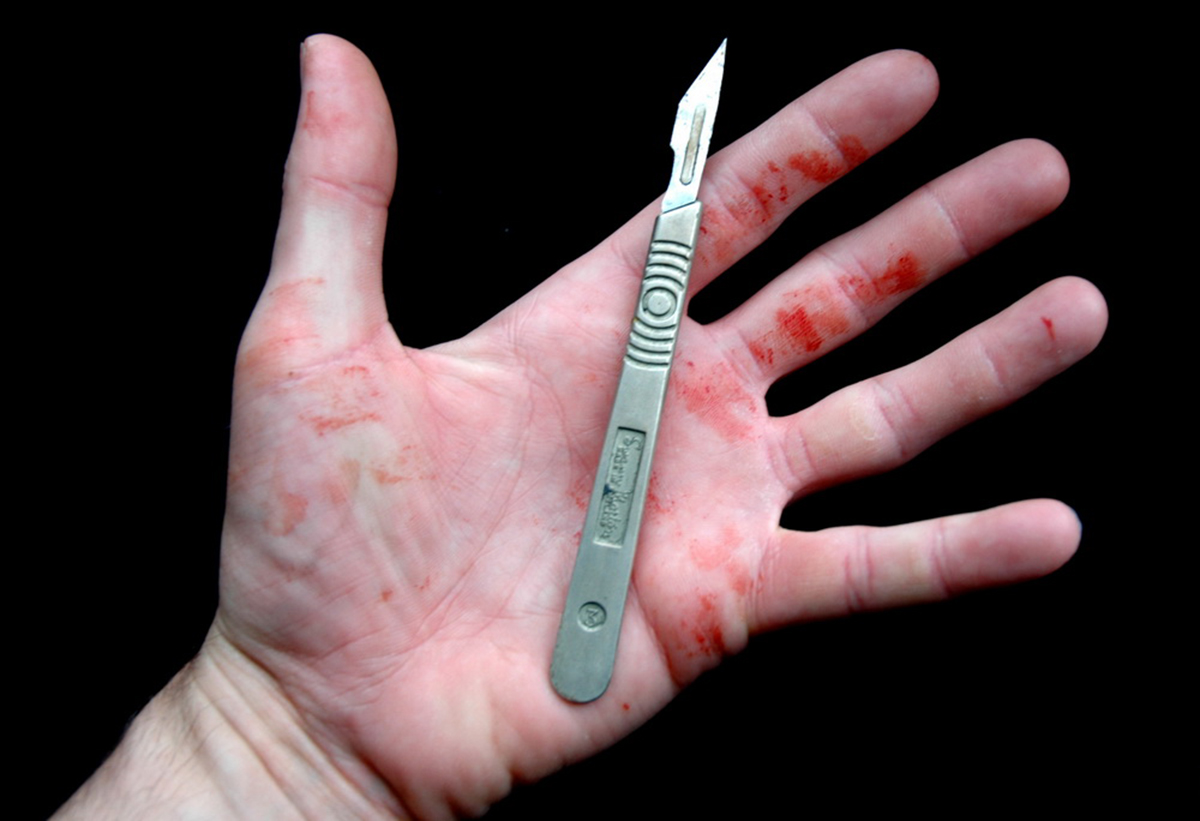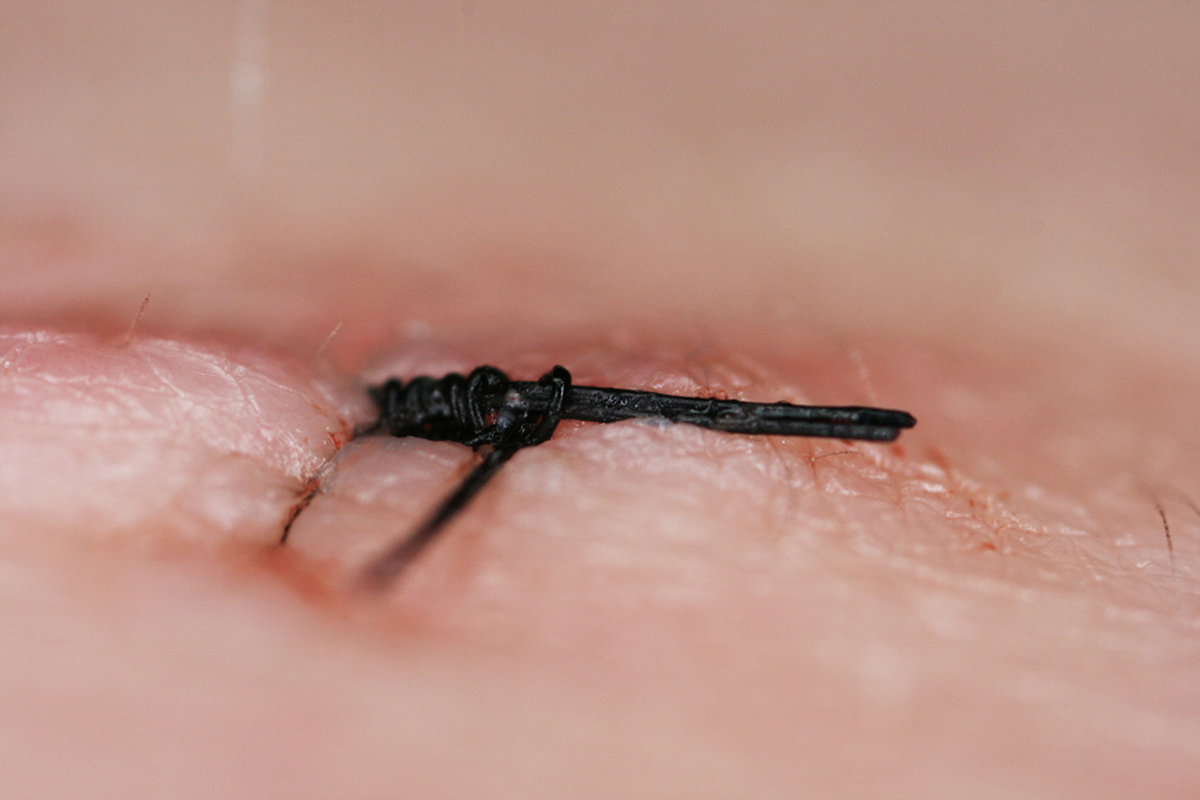Extreme situations sometimes lead to extreme actions. That is certainly the case with medical self-care. While almost all of us handle some of our health needs without the help of a doctor, here are 7 of the more extreme examples of what one can survive when needed, plus one medical procedure of dubious necessity.

This article leaves out any descriptions of acts of self-harm. And, as mentioned above, we absolutely, positively do not recommend that any reader attempt any of these procedures.
1. Breast biopsy.
Imagine you are a woman, a physician, posted for winter duty at an observation station in the Antarctic. Then imagine that you find a lump in your breast. That is exactly what happened to Dr. Jerri Len Nielsen, who was stationed at the Amundsen Scott South Pole Station, where she was the only doctor on post during the winter. Finding a lump in her breast, she conducted her own biopsy, in consultation with doctors in the United States by email during the procedure. Unfortunately, her testing supplies were out of date and she was not able to determine the nature of her tumor while still at the Pole, forcing her to wait for emergency evacuation months later. The diagnosis in fact was cancer, but after mastectomy and chemotherapy, and additional surgeries, she went into remission and a movie was made about her experience.
2. Removal of part of skull.
British scientific director and artist Amanda Feilding searched for years to find a physician willing to do a procedure called trepanning, the removal of part of the skull to relieve pressure on the brain, usually to prevent severe headaches. At the age of 27, Feilding decided to perform the procedure on herself, opening a tiny, circular hole in her skull with a drill she cooled down with water to keep from burning her brain. Even though she lost a lot of blood, she recovered from her surgery, and a film (shown to invitation-only audience) was made about her experience.
3. Surgical removal of a musket ball.
During America's Revolutionary War, Robert Shutfleff was a tall, handsome, soldier in the Fourth Massachusetts Regiment of the Continental Army. Shutleff was an effective soldier, but kept a very important secret. Shutleff was actually a woman named Deborah Sampson.
When Shutleff/Sampson was wounded in a battle near West Point, New York, she escaped from the field hospital so she would not be discovered to be a woman, removing a musket ball from her thigh with a pen knife and sewing needle. She recovered from her injury. The next time she was wounded, however, field doctors discovered that she was a woman, and she was discharged from the Continental Army.
See Also: Home Treatments For Hemorrhoids
4. Do-it-yourself hair transplants.
Dr. Robert Middleton had been a dashing military man in World War II, but by the late 1950's he was losing his hair. Setting up a family practice in Granger, Texas, Dr. Middleton heard of a then-new procedure called autologous hair transplantation, placement of hair from one part of the body to the scalp. Using pubic hairs rather than scalp hairs, Middleton moved hair from his nether regions to his very bald forehead, proudly offering patients a look through a magnifying glass to observe the progress of each "sprout."
More Extreme Cases Of Medical Self-Treatment
5. Appendectomy.
Anesthesia for surgery only became available in the 1800's, and for several decades the attitude among surgeons was "more is better." Even minor operations were performed under general anesthesia, with the unfortunate outcome that some patients were given too much chloroform and never regained consciousness. Dr. Evan O’Neill of New York City's Kane Summit Hospital set out to prove that general anesthesia was not necessary by giving himself a local pain reliever and then removing his own appendix, making the large incision required at that time and allowing his assistants to sew him up after he removed the appendix. Years later, at the age of 70, O'Neill performed a delicate operation to repair an inguinal hernia on himself in two hours, avoiding certain death that would have followed his knicking the femoral artery. However, O'Neill died a few months later.

6. Kidney stone removal.
In the 1600's, surgery was performed by blacksmiths, who had the physical strength to do quick amputations, rather than doctors. A blacksmith in the city of Amsterdam named Joannes Lethaeus removed his own kidney stone when he was unable to find another blacksmith to perform the operation for him.
Sending his wife to the fishmarket, a book by the mayor of Amsterdam of the time records, Lethaeus enlisted his brother to hold back his scrotum while he plunged a knife into his urethra, hitting a large kidney stone. When the stone would not come out on his own, he plunged the knife into his perineum (the regions between the testicles and the anus) a second time and pulled out the stone with his fingers. Then Lethaeus sent for a tailor to sew up the wound. The surgical incision healed, but Lethaeus succumbed to an infection of his bladder.
See Also: How to Treat Food Poisoning at Home
7. Surgical amputation of hand.
In 2007, 47-year-old South Carolina farmer Sampson Parker was harvesting corn with some stalks got caught in a mechanical roller that removes the grain from the stalk. His right hand became caught in the machine as well, and for over an hour, everytime he tried to pull his hand back, more and more of his arm was caught in the machine.
Trying to stop the forward motion of his arm further and further into the machine, Parker used his free hand to to jam an iron rod into the mechanism, but sparks from the friction of the rod against the roller set the tractor on fire. Realizing he would die in the fire if he could not free himself, Parker cut through the muscles in his arm and fell to the ground, using the force of his fall to break the bone and free himself from the machine. Parker called to his pickup truck and drove to the middle of the road to force a passerby to stop. The passing motorist called for help, a helicopter picked up Parker for his ride to the hospital, where he recovered after 3 weeks in a burn unit.
Worthy mentions
X-ray therapy
In the early 1900s, Emil Grubbe was a medical student who believed that X-rays could treat breast cancer. After accidentally burning his hand with an X-ray machine, he noticed the skin was inflamed and believed this reaction could destroy cancerous tissue. Grubbe decided to use this method on himself as a treatment and also convinced a surgeon to use it on a patient with breast cancer. Surprisingly, the tumor shrunk, leading Grubbe to claim that he had found a new treatment for cancer.
However, prolonged exposure to X-rays can lead to severe health issues, including the development of cancers. Although early X-ray therapy did play a role in the history of cancer treatment, its unregulated use caused harm, and modern techniques are much more sophisticated and safe.
C-section
In 2000, Ines Ramírez Pérez, a woman from a rural area in Mexico, experienced severe pain during labor after several days. With no medical assistance nearby and believing she might die, Ramírez decided to perform a cesarean section on herself using a kitchen knife.
Amazingly, she successfully gave birth to a healthy son and then walked several miles with her baby to get medical help. Both mother and child survived, and her case is often described as one of the most extraordinary instances of self-surgery.
- "Dr. Evan Kane dies of pneumonia at 71". New York Times. April 2, 1932. p. 23.
- Rister, R. Healing without Medication. Basic Health Publications, 2003.
- Photo courtesy of Jason Rogers by Flickr : www.flickr.com/photos/restlessglobetrotter/2754248687/
- Photo courtesy of Quinn Dombrowski by Flickr : www.flickr.com/photos/quinnanya/3429974300/


Your thoughts on this